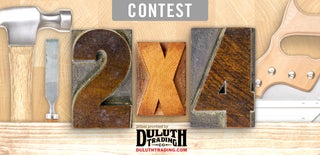Introduction: (2x4) Bathroom Wall Cabinet / Medicine Cupboard
I built this cabinet for our bathroom, primarily using 2x4" timber, as described in this Instructable.
The materials list includes 2x4" timber, #10 Biscuits, screws, nails, glue and some small hinges
The 'power tool' equipment used includes table saw, mitre saw, biscuit jointer, router table and a sander
Step 1: Prepare the 2x4
The first step was to prepare the 2x4 timber, which was done by rough cutting the material to lengths. I identified which lengths I could get from each 2x4, bearing in mind that the carcass would come from re-sawing the lengths in half; that the measurements for one door would make the second when re-sawn, the panel would be cut separate as I wanted that re-sawn a little thinner, which would also give additional (thinner material for the curved trim at the top and bottom)
With lengths roughly cut, next I ran all of the pieces through the table saw, with the width set just enough to remove the rounded edges on both side. Resetting the saw, I then split the lengths into two (three for the door panel) and started gluing panels together (keeping an eye on the value of book-matching the door styles)
I do own (and would have liked to have used) a jointer to run the glued edges, but it's not in excellent shape and would (as it's currently not calibrated very well) probably have made things worse.
Rather than ripping up another length of 2x4, I ripped the door styles (in the same style) from some scrap 2x3.
Step 2: Jointing Panels
Each pair of boards have been jointed together using #10 biscuits and a good quality glue. A little bit of a slow process, due to my lack of clamps; but two pairs at a time, each evening (as I do most DIY at weekends) is fine.
When jointing, I laid the pairs together and pencil marked the edges to join, with further indicators (across the join) about every 10" where biscuits would be placed. A test cut on scrap material to check the depth and fit of the biscuits is advisable.
Note: for around £50, the investment in the jointer is certainly a good one, as the process is very quick and easy.
Step 3: Carcass Construction
It is true, you can NEVER have too many clamps! Knowing that I was going to be very short, I needed to think outside the box a little.
The red belts are on two uprights/inside sheves (central section) which have been joined with biscuits.
Fixings from the outside edges are screws as they will not be visible, when installed.
Lots of sanding!
Then some more sanding!
With the carcass construction completed, a test fit and the moment of truth ... it fits.
Step 4: The Doors
The doors have biscuit jointed corners with the central panel in a small rabbit. To get the measurement, I took the width of the central section (63.5cm) and made a "story stick" with 64cm and the half mark at 32cm, to layout the door rails and styles. Slightly oversizing, as this would be trimmed to fit later.
After cutting the wood pieces to length, I cut a rabbit on all the pieces (using the router table and setting the fences). On the two longer sides, the rabbit stops short.
Slight mistake for the good, I think ... I didn't measure (oops) the thickness of the door panels against the depth of the rabbit. But rather than increase the depth of the rabbit, I opted to add a decorative rabbit around the panels, so that some of the rabbit cut would be revealed on the face side.
A few small dots of glue and the panels are pinned in place.
Final step here is to scribe the doors against the carcass and trim them to fit neatly, add the hinges, install them and the one thing that I forgot ... add a couple of small handles.
For the moment, I am leaving this unfinished, but expect to be priming and painting it to match the rest of the bathroom.

Participated in the
Full Spectrum Laser Contest 2016

Participated in the
2x4 Contest













